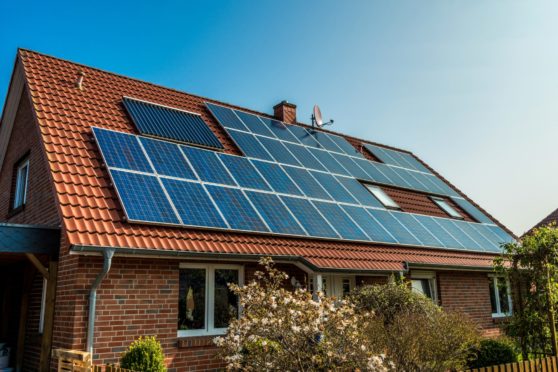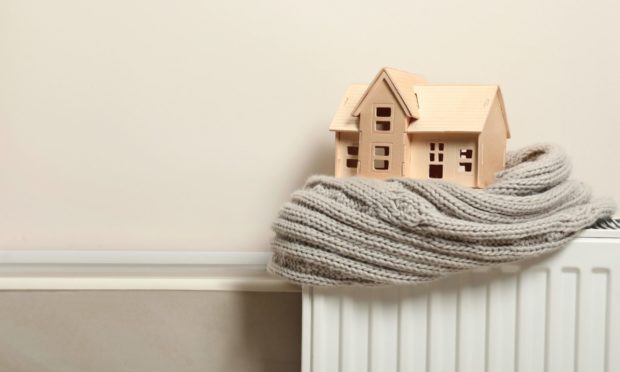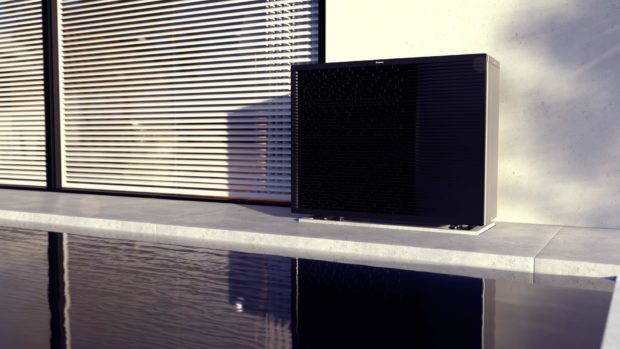More than half of Dundee homes need substantial work if the city is to meet climate change targets.
At least 40,000 properties in the City of Discovery need improvements such as wall insulation and upgraded boilers, according to a report by energy supplier Scottish and Southern Electricity Networks (SSEN).
There are around 70,685 dwellings in Dundee.
The Scottish Government wants all possible homes to have a C rating for energy efficiency by 2035.
The Energy Performance Certificate (EPC) system rates homes from A to G, with A being the most efficient.

Home owners need to make ‘quite a change’
The Natural Energy Company (NEC), based in Newport-On-Tay, has been improving homes in the area for 15 years.
Director Jennifer McLaren said the majority of homes they see could use a lot of work to improve their efficiency.
She said: “Reaching the government targets is going to be a challenge.
“I think there has to be quite a change in the behaviour of people towards insultation and there should be more funding from the government.
“A lot of the homes we see are at D or E rating so improving them to a C needs a lot of work.
“A C rating is about as good as some older houses can get, realistically.”
How you can improve your home
Mrs McLaren said the simplest, yet most effective, step is to install insulation.
She said: “That really is the best thing to do. It helps trap the heat you are generating, in turn meaning you don’t have to generate so much.
“We see a lot of old houses that are quite drafty and a bit of insulation does wonders for them. I would say it’s the first thing anyone looking to improve their EPC rating should do.
She continued: “After that, I think looking into a heat pump is a good idea, but convincing people already on mains gas that it’s worth their while can prove difficult.
“While it can reduce the amount of CO2 a home uses by a 10th, it doesn’t offer a significant cost saving over gas mains so some people don’t see the point.”
Heat pumps use thermal energy to move warm and cool air around a building in order to control the temperature.
The technology has come a long way.” Natural Energy Company director Jennifer McLaren
It can be used to heat or cool a home.
Mrs McLaren said many people may have memories of them as noisy air conditioning units while on holiday in Europe.
She said they have moved on in recent years.
“The technology has come a long way. Heat pumps really are one of the best ways to reduce a home’s carbon footprint,” she added.
Energy efficiency helps balance ‘big increases’ in demand
Jonty Haynes, senior analyst at Regen, led the team behind the report.
He said the country is undergoing a “major energy transition”.
“The reasons for these goals are clear; improving energy efficiency directly leads to reduced fuel poverty, improved public health and reduced carbon emissions,” he added.
“Electricity networks are already expecting big increases to demand as electric vehicles, heat pumps and new developments come online — energy efficiency can help to mitigate some of this impact.”
Elizabeth Leighton, director of the Existing Homes Alliance Scotland coalition, said making homes energy efficient was “a win-win”.
“When all the work of it is done, homes will be cheaper to run, warmer and healthier — and it will help us tackle greenhouse emissions and fuel poverty.
“When we speak to the supply chain and installers, they say they are ready to expand their businesses to meet increased demand – as long as Scottish Government policy and funding puts in place a growing pipeline of work,” she added.
What are governments and councils doing to improve homes?
The Scottish Government has made a range of options available to help home owners make their properties greener.
These include:
- Private sector landlord loans
- Renewable heat incentive — where home owners get paid for each unit of renewable energy generated in kitted-out homes
- Interest free Home Energy Scotland loans
Dundee City Council has improved the efficiency of more than 4,000 homes across the city with its £40 million external wall insulation programme.
Do I need to start making changes now?
The Scottish Government does not currently intend to make improvements mandatory for private home owners.
Instead, it will “encourage uptake” of grants and work with local authorities on delivering improvement schemes.
However, this may change by 2030 with a recent Scottish Government report warning it may be necessary to “mandate action” by 2030.












